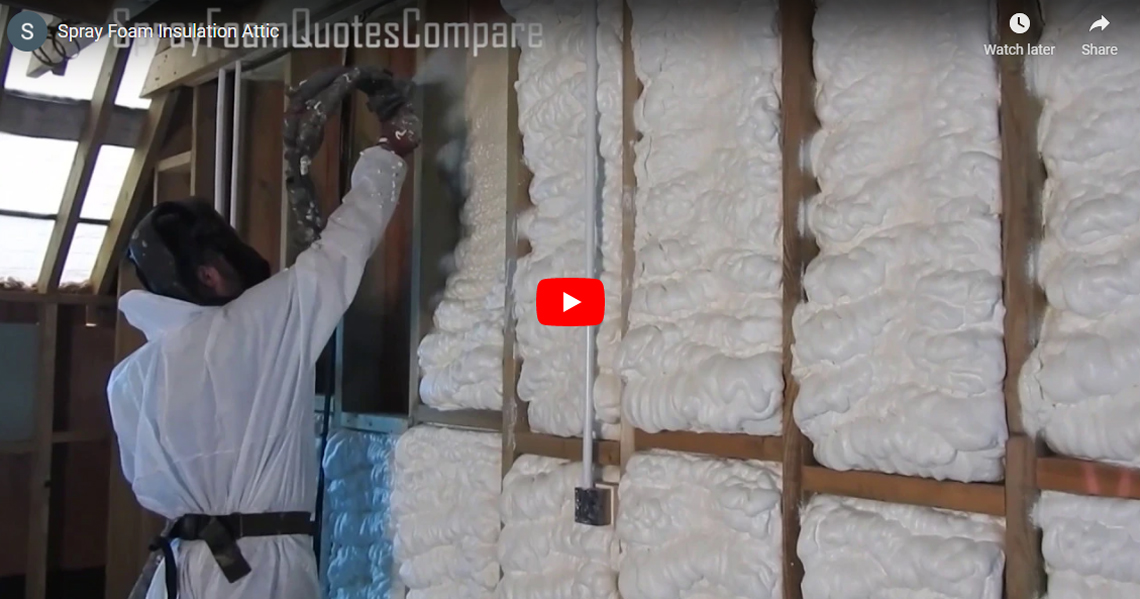14 Top Questions Frequently Asked

Nationwide
Rather than spending hours searching for quotes we compare local and national contractors, so you don’t have to.

Expert Advice
We provide unbiased advice on the best insulation suitable for your project

Trusted Network
We regularly check ratings & reviews to ensure you only get the best contractors for your project
Frequently Asked Questions
Will Using Spray Foam Quotes Compare Cost Me Anything?
Using our service wont cost you a penny, and it could save you a whole lot more. We will match you with up to 3 accredited contractors who cover your area, and ensure they are the most suitable for your project.
Why is Spray Foam Insulation Better Than Traditional Insulation?
Spray foam insulation is the perfect alternative to traditional insulation methods, such as fibre glass and cellulose insulation. What sets spray foam apart is the fact that it expands to create an air tight barrier, covering and sealing the surface completely. This prevents the dissipation of heat and removes the chance of mould and dampness. The investment in this new high quality insulation will save money with heating and maintaining the house in the long term.
Will Spray Foam Cause My Timbers To Rot?
No. Open celled foam is breathable, when applied to any surface it allows any moisture present to dry out through evaporation, this is important as timber and masonry surfaces need to breathe to ensure that no damp or rot problems are caused, where as closed cell foam is used when moisture breathe ability is not a requirement such as on metal. However if your timbers are already damp or have some form of rot or woodworm they should be treated and dried first.
Why Should I Choose an Accredited Installer?
Choosing an accredited installer is important because you will be dealing with licensed contractors who have been approved and have extensively trained installers, as well as receive a manufacturers warranty for peace of mind. This way you can guarantee the work will be done right from the beginning, saving you more money and problems in the long run.Toggle content goes here, click edit button to change this text.
How Do We Use Your Data To Obtain a Quote?
In order to provide our services to you we need to collect and process personal data about you and disclose that personal data to a number of third party service providers. This personal data is necessary to provide you with the quotations and services that you have requested. All personal data will be held in strictest confidence and used only for the purposes for providing the service you have requested.
What is Spray Foam Insulation used for?
Most important use is blocking the noise. When water supply lines are in use, they can make a lot of noise. Use a tiny amount of spray foam insulation over pipes and frame to maintain the pipe in position and reduce noise to avoid the problem. Using impermeable spray foam to tie artistic rocks and fill a gap to keep flow of water freely and maintain a lovely flow of water. It also aids in maintaining average temperature, protecting breakables and filling the gaps.
What is spray foam insulation made of?
Methylene diphenyl diisocyanate and polymeric methylene diphenyl diisocyanate form the “A” side of a spray polyurethane system. The “B” side is often a blend of polyols, catalysts, blowing agent, fire retardant, and surfactants. When the “B” side meets the “A” side, a reaction occurs, resulting in foam. Each spray foam manufacturer’s “A” and “B” sides are exclusive to them. Although the majority of “A” sides will share elements, each supplier will have their own specific blend. Liquid and organic chemical compounds produced from petroleum extracts are the major constituents in Icynene-Lapolla spray foam insulation. The spray foam is non-retaining, environmentally friendly, and has a Class One fire rating.Toggle content goes here, click edit button to change this text.
Is spray foam insulation safe?
Spray foam insulation is recently a popular option among contractors and homeowners for a variety of reasons. It’s most significant advantage is that it totally closes all of the microscopic gaps and holes that allow bugs, air, and dampness to enter your home. However, the insulation business may not inform you that spray foam may create a harmful environment in your home. Spray foam may save you money on your energy bill, but it may come at the risk of your health if you compromise with the quality of chemicals used.
How long does spray foam insulation off-gas?
When builders talk about off-gassing, they’re referring to the volatile organic compounds that cause it. So, how often can spray foam insulation last before it starts to off-gas? It all depends on the VOCs. Your contractor will discuss re-occupancy periods in particular. If a low VOC product was utilized, the re-occupancy time would have been between two and four hours once the project is completed. If a greater VOC spray foam is utilized, the re-occupancy period increases significantly, with between 24 and 48 h. If off-gassing is an issue for you, it’s something you should think about. If you’re worried about the odor in your house, there’s a solution. A professional contractor will install industrial fans in the region in which the spray foam will be applied.
How long does spray foam insulation smell last?
Spray foam insulation must have an odor that lasts about 24 hours. If it persists any longer, it means there’s a problem with the ventilation. Your contractor should, ideally, have air exchange devices in the region where the foam has been sprayed. The issue is that you can’t get rid of the stench of foul spray foam. You’ll have to devise a strategy to divert the odor elsewhere. Of course, you’ll need to perform more research in order to get more insights about diverting the false smell out.
Is spray foam toxic when dry?
Exposure to the vapors can possibly lead to the formation of pneumonia or bronchitis related to the chemical elements in the spray foam. Those applying the material should wear safety goggles, gloves, and respirators, among other precautions. It emits dangerous gasses that can induce distorted vision and breathing difficulties. If the foam is not blended properly, it will continue to produce fumes, causing health problems until it is entirely eliminated. Spray foam insulation can be toxic if handled carelessly. Spray foam can dry when excess chemicals are used for the insulation purpose.
Where not to use spray foam insulation?
Spray foam should never be used to insulate around fluorescent canister lights. You can create heat and raise the fire risk if you pour too right at the top of chandelier light boxes. While it is viable to add insulation between the front of a circuit board and the outside wall, spray foam is not recommended. If you put foam within the box, the parts will become stuck. Furthermore, you are exposing your electrical box to combustible substances. If you do decide to apply spray foam insulation in this region, make sure it’s low-expanding.
How long does spray foam insulation last?
If foam insulation is not put properly, it can shrink over time. It should also be implemented in the proper environment. It will not shrink if you hire the correct professional who is certified and experienced in spray foam insulation. When it concerns the foam insulation, not every option is the same. Before you hire a contractor, inquire about the type of foam that will be used in your home to ensure longevity.


